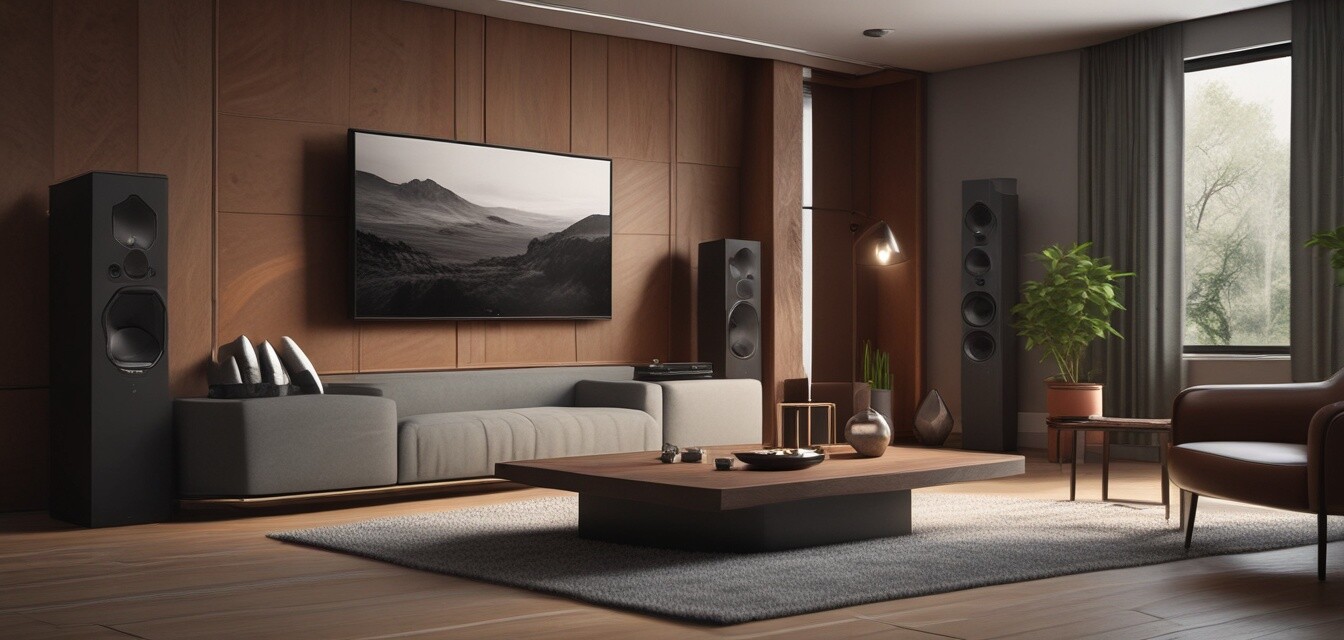
Essentials for a Complete Home Audio Experience
Key Takeaways
- A complete home audio experience includes various components designed to work together seamlessly.
- Choosing the right speakers is essential based on your space and listening preferences.
- Additional equipment like amplifiers and soundbars can enhance sound quality significantly.
- Wireless connectivity is a popular option for modern audio systems, offering convenience and flexibility.
- Proper setup and calibration make a big difference in achieving optimal sound performance.
Creating the ultimate home audio experience is about more than just purchasing speakers. It's about understanding the essential components that work together to deliver high-quality sound in your space. This guide will help you navigate through the different components you need for a complete home audio setup, focusing on the features, benefits, and types available.
Understanding your audio needs
Before diving into the specifics, it is crucial to evaluate your audio needs. Take into account the following:
- The type of content you frequently enjoy (music, movies, gaming).
- Your available space and its acoustics.
- Your budget and how much you are willing to invest in audio equipment.
Essential Components of a Home Audio System
Let's break down the primary components you’ll need to consider for a complete home audio experience:
| Component | Description | Purpose |
|---|---|---|
| Speakers | Devices that convert electrical signals into sound | Create the audio you hear |
| Receiver | Acts as a hub to control and connect various audio sources | Manage audio source selection and output |
| Soundbar | A slim speaker system designed to enhance television sound | Provides a surround sound experience in a compact format |
| Subwoofer | A specialized speaker for low-frequency sounds (bass) | Adds depth to music and movie soundtracks |
| Amplifier | Boosts the audio signal from a source | Improves speaker performance and sound quality |
Choosing the Right Speakers
Speakers are one of the most crucial components of your audio experience. Here’s what to consider:
- Types of Speakers: There are several speaker types to choose from, including Bluetooth speakers, bookshelf speakers, and floor-standing speakers. Each type offers different benefits based on your needs.
- Sound Quality: Pay attention to specifications like frequency response and sensitivity. A wider frequency response often indicates more detailed sound reproduction.
- Size vs. Power: Larger speakers usually produce better sound quality but may not be suitable for smaller spaces. Make sure to balance size, power, and placement according to your room's dimensions.
The Role of a Receiver
The receiver is the brain of your home audio system. It receives audio signals from various sources and sends them to your speakers. When selecting a receiver, consider:
- Channel Count: Ensure the receiver has enough channels to support your speaker setup.
- Connectivity: Look for multiple input options (HDMI, optical, etc.), and consider wireless or Bluetooth capabilities.
- Built-in Features: Some receivers have integrated streaming services, making it easier to access content without a separate device.
Enhancing Sound with a Soundbar
A soundbar is a space-saving option for those who want a more immersive experience without sacrificing too much room. Here are some advantages:
- Easy installation with minimal wiring.
- Wireless connectivity with compatible devices.
- Compact design that complements your television.
Adding Depth with a Subwoofer
The subwoofer is essential for low-frequency sound reproduction, which enhances the overall audio experience. When selecting a subwoofer, consider:
- Size and Power: The right size for your room and enough power to ensure it can handle deep bass effectively.
- Placement: Proper placement can significantly affect performance, so consider where you’ll put it in the room.
Using an Amplifier
For audiophiles seeking the highest sound quality, an amplifier can vastly improve the audio output of your system. Here’s how to choose:
- Type: Decide between integrated amps or separate preamp and power amp configurations.
- Power Output: Match the amp to your speakers for optimal performance.
Setting Up Your Home Audio System
Setting up your home audio system involves careful placement of each component. Here are some tips to consider:
- Start with speaker placement, ensuring they are at ear level when seated.
- Consider soundproofing your room to improve acoustics.
- Use quality cables and connectors for reliable connections.
- Calibrate your system using built-in tools or manual adjustments for optimal sound.
Tips for Beginners
- Start with a basic system and gradually upgrade components as your budget allows.
- Research compatibility between components to avoid purchasing products that won't work well together.
- Read reviews and seek recommendations to discover reliable brands.
Pros
- Improves audio quality significantly.
- Enhances home entertainment experience.
- Can be customized to fit personal preferences.
Cons
- Can be expensive depending on the components purchased.
- Setup can be complex for those unfamiliar with audio equipment.
Conclusion
Creating a complete home audio experience involves more than simply adding a few speakers to your living room. It requires thoughtful consideration of each component, including receivers, soundbars, and subwoofers, as well as proper installation and setup. By understanding your audio needs and selecting the right equipment, you can elevate your listening experience to new heights. Whether you’re enjoying music, movies, or gaming, a well-designed audio system can make all the difference.